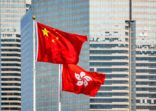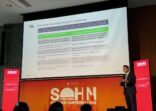Launches of mutual funds with the “Shanghai-Hong Kong-Shenzhen” investment theme have increased after the Shenzhen-Hong Kong Stock Connect opened last December, permitting China’s institutions and mutual fund managers easy access to SAR stocks.
So far about 60 such mutual funds have been selling in China, according to data from Shanghai Tiantian Fund Distribution.
At least four of these themed funds funds have had to stop large subscriptions ranging from RMB 10,000-RMB 1m in order to ensure stable operations of the products, state-run Securities Times reported.
Shenzhen-based First Seafront Fund Management has introduced 17 such products, the most among mainland fund houses.
Managing director and chief economist Yang Delong told FSA the assets under management of these funds just topped RMB 10bn ($1.46bn).
He said the Shanghai-Hong Kong-Shenzhen blue-chip focused fund is the most popoular within the firm’s offerings.
“[In general], these funds have increased the allocation toward Hong Kong-listed stocks to above 50%. The move is due to better performance of Hong Kong equities, which tend to reflect the US market.
“Investors also see Hong Kong equities as a tool to diversify from the currency risk. Meanwhile, the tightening measures to cool down the property markets in China have directed some of the capital into equity markets and both A-shares and Hong Kong stocks have benefitted.”
Hang Seng Qianhai Fund Management, the first onshore mutual fund company with a non-mainland entity holding a majority stake, also has a fund – Shanghai Hong Kong Shenzhen Emerging Industry Selection Mixed Type Fund – recently approved by the China Securities Regulatory Commission (CSRC).
Tianhong Asset Management, an affiliate of Alibaba and the biggest mutual fund manager in China, applied to launch a Hong Kong stock-focused mutual fund in September last year. It is pending approval.
Flowing south
For the Shanghai link, launched in November 2014, southbound flows into Hong Kong stocks were $48bn (RMB 329bn) as of January this year, versus $19bn (RMB 130bn) of northbound capital, according to data from the Hong Kong Stock Exchange.
But northbound capital flows into China are stronger than soutbound when comparing the Shenzhen link.
The Shenzhen-Hong Kong Stock Connect, launched in December 2016, has so far recorded a southbound net inflow of $1.83bn (HK$14.2bn) into SAR-listed small and mid-cap equities, compared to $4.57bn (RMB 31.4bn) of northbound flows.
Looking at the full Stock Connect – Hong Kong-Shanghai-Shenzhen, Morgan Stanley estimated southbound capital could top $30bn in the next 12 months. One-third could come from Chinese insurers, which were approved by the CSRC to trade Hong Kong stocks through the Stock Connect scheme in September last year.
The trend echoes the view of several fund managers who have noted increasing capital flowing south into Hong Kong through the Stock Connect scheme.
Hong Kong benchmark indices have outperformed the A-share indices over the past year, according to FE.

















